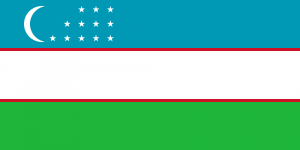Language/Northern-uzbek/Culture/Historical-Sites-and-Landmarks
As a language teacher, I believe that learning a language is not just about mastering the grammar and acquiring vocabulary. Understanding the culture and history behind a language is equally important as it helps us appreciate the language better. In this lesson, we will explore the historical sites and landmarks that are a testament to the rich past of Northern Uzbekistan.
The Importance of Historical Sites and Landmarks
Northern Uzbekistan is home to some of the most impressive historical sites and landmarks in Central Asia. From the ruins of ancient cities to grand mosques, mausoleums, and fortresses, these sites offer us glimpses into the past and remind us of the cultural and architectural heritage of the region. Understanding the significance of these sites is an essential part of understanding the country's history and its people.
Ancient Cities
Northern Uzbekistan is dotted with ancient cities and ruins. Some of the most notable ones include:
- Tashkent - The capital city of Uzbekistan, Tashkent was once an important center of commerce and culture on the Silk Route. Today, remnants of its past can still be seen in the old city center, where narrow streets and traditional bazaars transport visitors back in time.
- Samarkand - A UNESCO World Heritage site, Samarkand is home to some of the most well-preserved ancient buildings in Uzbekistan. The Registan, a grand public square, is a prime example of Islamic architecture, with its stunning madrasas and mosques.
- Bukhara - Known as the "City of Trade and Scholars," Bukhara was another important center of culture and commerce along the Silk Route. Its historic center is home to hundreds of ancient buildings, including mosques, madrasas, and even a royal palace.
- Khiva - Also a UNESCO World Heritage site, Khiva is an excellent example of a well-preserved medieval city. Its mud-brick walls and narrow streets are evocative of the city's past as an important stop along the Silk Route.
Mosques and Mausoleums
Mosques and mausoleums are ubiquitous in Northern Uzbekistan, and they serve as testament to the region's rich Islamic heritage. Some of the most impressive include:
- Bibi-Khanym Mosque - Located in Samarkand, Bibi-Khanym Mosque was once one of the largest mosques in the world. Its grand dome and intricate tilework are a sight to behold.
- Kalon Mosque - Located in Bukhara, Kalon Mosque is one of the oldest and most significant mosques in the region. It is a testament to Bukhara's importance as a center of Islamic scholarship.
- Gumbaz Mosque - Located in Khiva, Gumbaz Mosque is notable for its blue dome and intricate tilework. It is considered one of the best examples of 18th-century Islamic architecture in the region.
- Ak-Saray Mausoleum - Built in the 15th century, the Ak-Saray Mausoleum in Shakhrisabz is an impressive architectural feat. Its grand scale and intricate tilework are a testament to the power and opulence of Timurid architecture.
Fortresses and Castles
Northern Uzbekistan is home to a number of fortresses and castles that once served as important military strongholds. Some of the most impressive include:
- Kyzyl-Kala - Located in Karakalpakstan, Kyzyl-Kala is an ancient fortress that dates back to the 3rd century BC. Its mud-brick walls and towers are well-preserved, despite being thousands of years old.
- Ark Fortress - Located in Bukhara, the Ark Fortress was once the residence of Bukhara's ruling emirs. Today, visitors can explore the fortress and its museums, which offer a fascinating glimpse into Bukhara's history.
- Toprak-Kala - Built in the 1st century AD, Toprak-Kala is an ancient fortress that once served as an important military stronghold along the Silk Route.
Conclusion
Northern Uzbekistan's historical sites and landmarks are a testament to the rich cultural and architectural heritage of the region. Exploring these ancient cities, mosques, mausoleums, and fortresses is an essential part of understanding Uzbekistan's past and present. By appreciating these cultural treasures, language learners can gain a deeper understanding of the language, history, and culture of Northern Uzbekistan.
| Northern Uzbek | Pronunciation | English |
|---|---|---|
| Bog'ishamol | bo-ghee-sha-mol | Ruins |
| Qurilish | kooree-leesh | Architecture |
| Arxitektura | ar-khee-tek-too-ra | Architecture |
| Yadgorlik | yad-goar-lik | Memorials |
| Tarixiy joylar | ta-reek-shee-y joy-lar | Historical landmarks |

